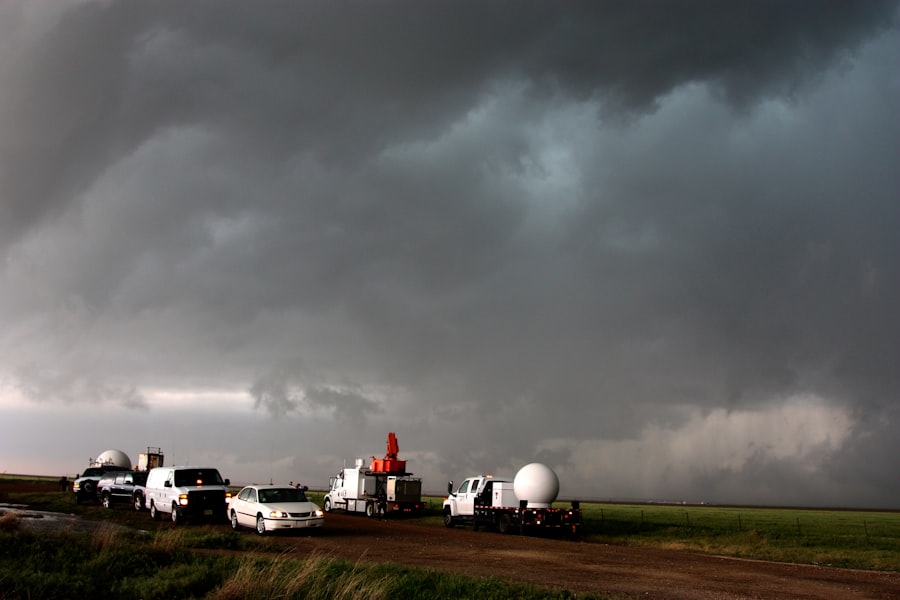The Drake Passage, a body of water situated between the southern tip of South America and Antarctica, is renowned for its tumultuous seas and unpredictable weather. Spanning approximately 800 kilometers (500 miles) in width, it serves as a critical maritime route for vessels traveling to and from the Antarctic region. The passage is not only significant for its geographical location but also for its ecological importance, as it connects the Atlantic and Pacific Oceans, facilitating the movement of marine life and influencing global ocean currents.
The Drake Passage has become a focal point for adventurers, researchers, and maritime enthusiasts alike, drawn by its reputation as one of the most challenging waterways in the world. Navigating the Drake Passage is often described as a rite of passage for sailors and explorers. The waters are notorious for their rough conditions, with waves that can reach heights of over 15 meters (50 feet) and winds that can whip up to gale force.
This unpredictability has made the passage both a formidable obstacle and a captivating destination. As vessels traverse these waters, they are not only confronted with the physical challenges posed by the environment but also with the rich history of exploration that has unfolded in this remote region. The Drake Passage stands as a testament to human resilience and the enduring spirit of exploration.
Key Takeaways
- The Drake Passage is a treacherous body of water located between South America’s Cape Horn and the South Shetland Islands of Antarctica.
- The Drake Passage has a rich history of exploration, with famous expeditions by navigators such as Sir Francis Drake and Charles Darwin.
- The weather in the Drake Passage is characterized by strong winds, rough seas, and rapidly changing conditions, making it one of the most challenging maritime routes in the world.
- Navigating through the Drake Passage presents numerous challenges, including icebergs, strong currents, and unpredictable weather patterns.
- Extreme weather conditions in the Drake Passage can have a significant impact on ships and passengers, leading to potential dangers and discomfort.
Historical significance and exploration of the Drake Passage
The historical significance of the Drake Passage is deeply intertwined with the Age of Exploration, a period marked by daring voyages and the quest for new trade routes. In the early 16th century, the passage was named after Sir Francis Drake, an English sea captain who became one of the first Europeans to navigate these treacherous waters. His expeditions not only expanded geographical knowledge but also paved the way for future explorers seeking to chart the unknown territories of Antarctica.
The Drake Passage became a symbol of adventure and discovery, drawing countless explorers who sought to unlock its mysteries. Throughout history, the Drake Passage has witnessed numerous expeditions that have shaped our understanding of the Antarctic region. Notable figures such as Ernest Shackleton and Robert Falcon Scott embarked on perilous journeys through these waters in their quest to reach the South Pole.
Their stories of bravery and endurance in the face of adversity have become legendary, highlighting the passage’s role as a gateway to one of the last frontiers on Earth. The legacy of these explorers continues to inspire modern adventurers who seek to follow in their footsteps, navigating the same waters that once challenged their predecessors.
Understanding the weather patterns in the Drake Passage

The weather patterns in the Drake Passage are notoriously volatile, characterized by rapid changes that can occur within a matter of hours. The convergence of cold polar air from Antarctica and warmer air from the southern hemisphere creates a unique climatic environment that contributes to the passage’s reputation for extreme conditions. Sailors often find themselves at the mercy of powerful storms that can arise unexpectedly, leading to treacherous sailing conditions.
Understanding these weather patterns is crucial for anyone attempting to navigate through this challenging waterway. Meteorological phenomena such as the Roaring Forties and Furious Fifties—terms used to describe strong westerly winds found in these latitudes—play a significant role in shaping the weather experienced in the Drake Passage. These winds can generate massive swells and turbulent seas, making navigation particularly perilous.
Additionally, fog and low visibility can further complicate matters for mariners, necessitating a keen awareness of changing conditions. As such, thorough preparation and real-time weather monitoring are essential components for those embarking on voyages through this unpredictable region.
The challenges of navigating through the Drake Passage
| Challenge | Description |
|---|---|
| Weather | The Drake Passage is known for its unpredictable and severe weather conditions, including strong winds and rough seas. |
| Seasickness | The rough waters of the Drake Passage can cause seasickness in many passengers, making navigation challenging. |
| Narrow Passage | The narrowness of the passage can make navigation difficult, especially when dealing with icebergs and other obstacles. |
| Icebergs | The presence of icebergs in the passage poses a significant navigational challenge, requiring careful maneuvering. |
Navigating through the Drake Passage presents a myriad of challenges that test even the most seasoned mariners. The combination of strong currents, unpredictable weather, and towering waves creates an environment where even minor miscalculations can lead to dire consequences. The passage is often described as a “graveyard” for ships due to its treacherous conditions, which have claimed numerous vessels throughout history.
Mariners must possess not only technical sailing skills but also an acute understanding of their vessel’s capabilities and limitations. In addition to natural obstacles, navigators must also contend with logistical challenges associated with sailing in such remote waters. The lack of nearby ports or safe havens means that vessels must be self-sufficient for extended periods, carrying enough supplies and fuel to endure potential delays caused by adverse weather conditions.
Furthermore, communication systems may be limited in this remote region, making it difficult to receive timely updates on changing weather patterns or emergencies. As a result, thorough planning and contingency measures are paramount for successful navigation through the Drake Passage.
The impact of extreme weather conditions on ships and passengers
Extreme weather conditions in the Drake Passage can have profound effects on both ships and their passengers. For vessels caught in severe storms, the risk of capsizing or sustaining damage increases significantly. High waves can batter ships mercilessly, leading to structural failures or loss of cargo.
Additionally, equipment malfunctions can occur when subjected to relentless forces, further complicating navigation efforts. For crew members tasked with managing these challenges, maintaining composure under pressure is essential to ensure safety. Passengers aboard vessels traversing the Drake Passage may also experience significant discomfort due to extreme weather conditions.
Seasickness is common among travelers unaccustomed to rough waters, leading to a challenging experience for many. Furthermore, limited visibility during storms can heighten anxiety levels among passengers, particularly those who may be unfamiliar with maritime travel. As such, effective communication from crew members regarding safety protocols and expected conditions is vital in alleviating concerns and ensuring a smoother journey through this tumultuous passage.
Strategies for navigating through the treacherous Drake Passage

To successfully navigate through the treacherous waters of the Drake Passage, mariners employ various strategies aimed at mitigating risks associated with extreme weather conditions.
By analyzing wind patterns, wave heights, and potential storm systems, navigators can make informed decisions about when to set sail and which course to take.
This proactive approach allows them to avoid areas prone to severe weather while optimizing their chances for a smoother passage. Another essential strategy involves ensuring that vessels are equipped with advanced navigational tools and safety equipment. Modern ships often utilize sophisticated radar systems, GPS technology, and satellite communications to enhance situational awareness while at sea.
These tools enable mariners to monitor changing conditions closely and make timely adjustments to their course as needed. Additionally, crew training plays a crucial role in preparing teams for emergencies that may arise during their journey through the Drake Passage. Regular drills and simulations help ensure that all crew members are familiar with safety protocols and can respond effectively in high-pressure situations.
The role of technology in overcoming weather challenges in the Drake Passage
Technology has revolutionized maritime navigation, providing sailors with tools that enhance safety and efficiency when traversing challenging waters like the Drake Passage. Advanced meteorological forecasting systems allow mariners to access real-time data on weather patterns, enabling them to make informed decisions about their routes. These systems utilize satellite imagery and predictive modeling to provide accurate forecasts that account for rapidly changing conditions in this unpredictable region.
In addition to forecasting technology, modern vessels are equipped with state-of-the-art navigation systems that enhance situational awareness at sea. Instruments such as electronic chart display systems (ECDIS) provide detailed maps and real-time positioning information, allowing navigators to track their progress accurately while avoiding hazards along their route.
As technology continues to evolve, it plays an increasingly vital role in helping mariners overcome the inherent challenges posed by navigating through the Drake Passage.
Safety measures and precautions for sailing through the Drake Passage
Safety measures are paramount when sailing through the unpredictable waters of the Drake Passage. Mariners must adhere to strict protocols designed to minimize risks associated with extreme weather conditions and potential emergencies at sea. One fundamental precaution involves conducting thorough pre-voyage inspections of vessels to ensure that all equipment is functioning correctly and that safety gear is readily available.
This includes life jackets, lifeboats, flares, and emergency communication devices. Additionally, crew training is essential for maintaining safety during voyages through this challenging passage. Regular drills focused on emergency response procedures help ensure that all crew members are prepared for various scenarios they may encounter while at sea.
Furthermore, establishing clear communication channels among crew members fosters teamwork and coordination during high-stress situations. By prioritizing safety measures and fostering a culture of preparedness onboard vessels navigating through the Drake Passage, mariners can significantly reduce risks associated with this formidable waterway.
Case studies of successful and unsuccessful voyages through the Drake Passage
The history of navigation through the Drake Passage is marked by both triumphs and tragedies that illustrate the challenges inherent in this formidable waterway. One notable case study involves Ernest Shackleton’s legendary expedition aboard the Endurance in 1914-1916. Despite facing insurmountable odds—including being trapped in pack ice—Shackleton’s leadership and determination ultimately led to the successful rescue of his crew after an arduous journey across treacherous waters.
This remarkable tale serves as a testament to human resilience in overcoming adversity while navigating through one of nature’s most challenging environments. Conversely, there have been instances where voyages through the Drake Passage ended in disaster due to unforeseen circumstances or inadequate preparation. The sinking of the MS Explorer in 2007 serves as a stark reminder of the dangers posed by extreme weather conditions in this region.
The vessel struck an iceberg during a storm and ultimately sank, leading to a dramatic rescue operation involving nearby ships. This incident underscores the importance of thorough risk assessment and contingency planning when embarking on journeys through such unpredictable waters.
The future of navigating the Drake Passage in the face of climate change
As climate change continues to impact global weather patterns, its effects on navigation through the Drake Passage are becoming increasingly evident. Rising sea temperatures may alter traditional weather patterns, potentially leading to more frequent storms or changes in ocean currents that could affect maritime routes. Additionally, melting ice in Antarctica may create new navigational challenges as previously inaccessible areas become open water while simultaneously increasing risks associated with icebergs drifting into shipping lanes.
Mariners must adapt their strategies accordingly as they navigate these evolving conditions in order to ensure safe passage through this critical waterway. This may involve investing in advanced technologies capable of providing real-time data on changing environmental factors or developing new protocols for assessing risks associated with climate-related changes in weather patterns. By proactively addressing these challenges posed by climate change, sailors can continue to navigate successfully through one of nature’s most formidable passages.
The resilience and determination required to conquer the Drake Passage
Conquering the Drake Passage requires not only technical skill but also an unwavering spirit of resilience and determination among sailors who dare to traverse its tumultuous waters. The challenges posed by extreme weather conditions demand meticulous preparation, advanced technology, and effective teamwork among crew members—all essential components for ensuring safe passage through this formidable waterway. As history has shown us through both triumphs and tragedies alike, navigating these waters is not merely about reaching a destination; it is about embracing adventure while confronting nature’s raw power head-on.
As explorers continue to venture into this remote region—whether for scientific research or personal discovery—the legacy of those who have come before them serves as an enduring source of inspiration. The stories etched into history remind us that while navigating through challenging environments like the Drake Passage may be fraught with danger, it is also an opportunity for growth and exploration that embodies humanity’s relentless pursuit of knowledge and adventure amidst nature’s most awe-inspiring landscapes.
The Drake Passage, known for its notoriously harsh weather conditions, is a treacherous stretch of water that challenges even the most seasoned sailors. This narrow body of water between the southern tip of South America and Antarctica is infamous for its unpredictable storms and massive waves. For those interested in learning more about the extreme weather patterns and the unique geographical features of the Drake Passage, a related article can be found on MyGeoQuest. This article delves into the factors that contribute to the passage’s reputation as one of the most dangerous maritime routes in the world. You can read more about it by visiting this page.
WATCH NOW! Drake Passage: Earth’s Deadliest Waters Revealed
FAQs
What is the Drake Passage?
The Drake Passage is the body of water between the southern tip of South America and the northern tip of the Antarctic Peninsula. It is known for its notoriously rough seas and challenging weather conditions.
Why is the Drake Passage known for having the worst weather?
The Drake Passage is known for having some of the worst weather in the world due to its location and the strong westerly winds that circle the Antarctic. These winds can create extremely rough seas and powerful storms, making it a challenging area for navigation.
What kind of weather can be expected in the Drake Passage?
Weather in the Drake Passage can be extremely unpredictable, with frequent strong winds, high waves, and rapidly changing conditions. Storms are common, and the area is known for its rough seas and challenging sailing conditions.
How does the weather in the Drake Passage impact travel and navigation?
The challenging weather conditions in the Drake Passage can make travel and navigation difficult for ships and other vessels. It is often considered one of the most treacherous sea crossings in the world, and sailors and travelers must be prepared for the possibility of rough seas and severe weather.
Are there any safety precautions for traveling through the Drake Passage?
Travelers and sailors passing through the Drake Passage should be prepared for rough seas and severe weather. It is important to follow safety guidelines and be aware of the potential risks associated with the challenging weather conditions in the area.
